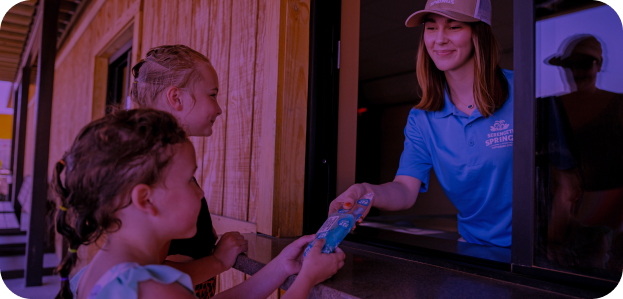Have you ever thought that despite the fact that the weather forecast is so often inaccurate, you still use it to organize your tomorrow?
The answer is simple: weather forecasting is an established science that we trust—and actually, they get more right than wrong.
What a mix of feelings, right?
But you trust the source because they are usually right, and deep down you know it. The problem is that when they get it wrong, the day can get messy and the awareness of the error is greater than all the right predictions, so the meteorologist is judged a little unfairly.
MANY FORECASTS ARE AMAZING BUT BE CAREFUL
The year begins and there are many expectations. In fact, it is an opportunity to look back and reflect on the good and the bad of the previous year and adapt strategies to fix what went wrong and achieve future goals.
When it comes to forecasting, we can see things being said by so many different people and companies—economics and technology ‘gurus’ are everywhere—that it’s hard to know what is, in fact, valuable and what is not. Based on self-interest, companies start to create their own narratives and that’s when we need to be careful.
Thinking about that, we have created 4 tips to help you evaluate predictions and as an extra, we have chosen 3 of the best forecasts, in our opinion, to inspire your 2023 strategies and goals.

TIP 1: Data is key
Bad data is worse than no data, which means we need to be aware of where and from whom we are collecting data. Can you imagine the damage to your business and all your decision-making processes with wrong information?
There is no such thing as a good forecast without a solid data foundation, which means that for a good prediction of the future, data analysis is mandatory.
With that said, “perfect” data is hard to come by, but there are several factors that qualify data as good:
- It’s readable and well-documented
- It’s readily available, for example, it’s accessible through a trusted digital repository
- The data is tidy and re-usable by others with a focus on ease of (re-)executability and reliance on deterministically obtained results
Some key questions to consider:
- Where did the numbers come from? What do they mean?
- How was the data collected?
- Is the data current?
- How accurate is the data?
TIP 2: There is no good forecast without a good source
Without a good source, what should be information becomes opinion. Every forecast should have references and links to the original data that brought the insight.
A reliable source is one that provides a thorough, well-reasoned theory, argument, and discussion based on strong evidence.
Four great sources to rely on:
- Census: almost every country has its official census.
- Government data: in the US, for example, it is data.gov. Every country has its own too.
- Universities’ official research: those materials can be found directly with the universities or different repositories of public and private data.
- Books and articles written by researchers for students.
TIP 3: Who is the forecaster?
It is essential to research who is making the prediction and the reader should always analyze whether the article was genuine with useful information or if it was just another ‘advertisement’ to gain clicks. Sometimes the prediction is not based on genuine information and there are many interests behind it.
On the other hand, there are forecasts for everything—from the broad economy to specific areas like tech and the future of AI, for example. Often useful insights come from an expert in the field doing the forecasting.
Questions to consider when assessing the writer:
- Where does the forecaster work? And how long have they been in the subject industry?
- Are they representing someone else in the article?
- What is the sector of this company and why would it invest in this research?
- How much of the article is opinion versus data?
- How many commercial calls to action does the article have? Too many means it’s less genuine.
TIP 4: Be ready for the unplanned
Even following all the tips above, part of every forecast is based on perception and opinion about the uncertainty of the future, which means that sometimes it’s not perfect and could be mistaken like our meteorologist from the beginning of this article.
That said, it’s important to have a contingency plan for your business and consider a plan B in all decision-making processes. You will be prepared for any change in the way and will react faster under pressure.

3 GOOD FORECASTS TO INSPIRE YOUR 2023 PLANNING
1) The Economist
What makes it amazing is the fact that they created a 20-minute video divided into sections, so you can choose which content to consume first.
Click Here for their 2023 forecast.
Another great thing they do is take their own predictions from the previous year and compare what actually happened to what didn’t, which makes it a lot more interesting and a lot more genuine.
Here is their 2022 internal audit/comparison.
2) Forbes
When it comes to opinion leaders’ thoughts and discussions, we all know the power of the Forbes magazine network and it is up to you to read or listen to the forecast which makes it more engaging.In this specific forecast about technology, the writer of the article is a well-known CEO of a global research group and the author of a best-selling book.
Click here to access the article.
3) The Guardian
It’s not as an engaging format if you compare it to the previous two recommendations, but you can see a lot of data and comparison with the previous year, which makes it more reliable. There are lots of great quotes from experts too.
Check it out HERE.
To stay in the know of our industry news and more follow our LinkedIn page.

TikTok will become the #1 social media in the world by 2023 for both users and advertisers.

